Now, please humour me if I start this review with a short physics lesson and a small rant.
I am what most would call “tall”—five-foot fifteen inches in my socks. There’s a lot of me to move about, and to support. I take a UK size 15 shoe (that’s 50 in foreign). It makes buying footwear a bit of a chore, but it does mean that I neither sink in soft sand nor topple over in high winds. In short my feet are in proportion to my body.
Which is more than can be said for the euphoniously named new “super-zoom” from Fuji, the Fujinon XF 100-400mm f4.5-5.6 R LM OIS WR. This is the biggest lens in the Fuji X Series stable, tipping the scales at a generous 1.375kg. This is due in large part of course to the fact that within that inconspicuous black casing is a prodigious amount of precision glass—21 elements in 14 groups, five of which are extra low dispersion, and one is super extra low (no, I don’t know the difference either). In full-frame terms this lens is a whopping 152-609mm equivalent (Ed: Let’s call it 150-600). That represents considerable pulling power in anyone’s language. The fact that it is usably hand-holdable due to the inbuilt OIS is a technological tour de force of the sort that would have been impossible not that many years ago.
Superlatives
So this is a lens of superlatives. Biggest, heaviest, most costly, biggest filter size, most elements. So why, oh why, does it have the tripod-mount equivalent of Action Man’s left boot? I have used some long focus lenses over the years, most recently the 400mm Tokina telephoto that I sold to part finance this monster along with my 23mm and X-T1. I have also used some thumping big ‘uns from the likes of Nikon, Sigma, Olympus and others. None of them have had such a tiny foot for tripod mounting. What makes it worse is that I can’t think of another long lens that used the same mounting method as the Fuji. Instead of a removable collar that encircles the lens and spreads the load, the collar and foot are separate; the ring remains attached to the lens itself. It can be loosened to allow the switch from horizontal to vertical shooting, but not removed. Instead, the foot is secured to the ring by two knurled thumbscrews. Not only does this concentrate the load into those two small screws, but it is fiddlyness incarnate to re-attach once removed. Please, Mr. Fuji—rethink this part of what is otherwise an excellent lens!
Yes, that’s right—rant over. The rest of this review will focus upon just how excellent the 100-400 has turned out to be. It has been a long wait for us Fuji X-philes. The 100-400mm has been a long time acoming. a couple of years at least from rumour via roadmap to reality. In that time the specifications have wibbled about a bit before firming up into the lens on the desk in front of me today. Although it was available at the same time as the X-Pro2 it took me a week or four to organise the additional funding to dip my toe in superzoom waters courtesy of London Camera Exchange in Guildford.
The original long lens in the system was of course the 55-200, itself a nifty performer, but topping out at 300mm equivalent it was not going to set the world on fire or satisfy the needs of wildlife and sports photographers to get close and closer. Things improved slightly with the 50-230—a bit of an odd fish in that it is an XC-designation lens—cheaper, more plastic and slower. It’s one of the sleepers of the system; it punches far above it’s weight (pun intended) and is great for travelling light. I have had both the aforementioned lenses but have chosen to keep the humble 50-230 as a companion for the 100-400, mostly for that weight advantage when travelling any distance or for any length of time.
Relative largeness
Have I mentioned it’s large? Some other reviewers have mentioned its comparative lightness but as Einstein said, everything is relative; it is certainly more svelte than an equivalent full-frame lens but in APS-C, mirrorless terms it is Brobdignagian to the extent that it fits comfortably only in one of my extensive collection of camera bags. Let me put it this way: I will be taking it out and about only when I have a specific aim in mind.
For the most part, that aim for me will be sports (motorsport, cricket and rugby) and airshows. I’m not big on wildlife but I definitely can see that this lens, weatherproofed as it is, will be a godsend for those who fancy stalking the odd deer or puffin. What I didn’t envisage the lens being particularly good at, when I bought it, was what I found myself using it for on its first outing: Street photography, or more precisely, street portraiture.
The Wintershall Players have for some years put on a passion play on Good Friday in Trafalgar Square in central London. It is a big event and makes the national news each year. Less well known is the fact that they re-run the whole thing at noon and 2:30 in Guildford High Street, 30 miles south west of London, on Easter Saturday. It’s a great photo-opportunity with free access and good views (if you get in place early enough). In the past I’ve amused myself shooting Romans outside Caffe Nero and Jesus in front of the Marks and Spencer bureau de change sign (geddit?) but this year I planned something slightly different. I wanted to get really close to the action, and to the expressions on the faces of the players and I think that largely I succeeded.




Pilate in trousers
Conditions were far from ideal. The light was flat and featureless, a biting wind was whipping up the road—it’s the first time I’ve seen Pontius Pilate in trousers—and a fine soaking drizzle was falling sideways, complete with the odd snowflake. There was even less elbow room than usual since half of the street is being dug up and the setts relaid. I was glad of the weatherproofing of both my X-Pro2 and the 100-400 and the deep lens hood protecting that 77mm diameter side-plate sized front element. A word on that hood, whilst I’m about it; it’s the first from Fuji in the X Series to have a lock, released by a small push-button. This makes sense given the little sliding trapdoor in the side for polarising-filter twiddling—you definitely want that to stay in one place.
I am personally about as religious as a jaffa cake, but I know a good show when I see one and the Wintershall Players know their stuff. They are all amateurs, remember, and do this for no financial reward. At times the action was too close for me to focus upon, but for the most part the 100-400 was absolutely ideal for my intended purpose. I shot using aperture priority, single AF, spot focus and metering, squeezing off single shots with OIS activated. Out of 150-odd exposures, I missed critical focus on about ten per cent—pretty good considering the speed of the action and the close proximity. Focus in these conditions at least was snappy if not blazing. More important in practical terms than outright speed was that there was zero hunting for the plane of focus. To me that spells efficiency, reliability, consistency and thus confidence.

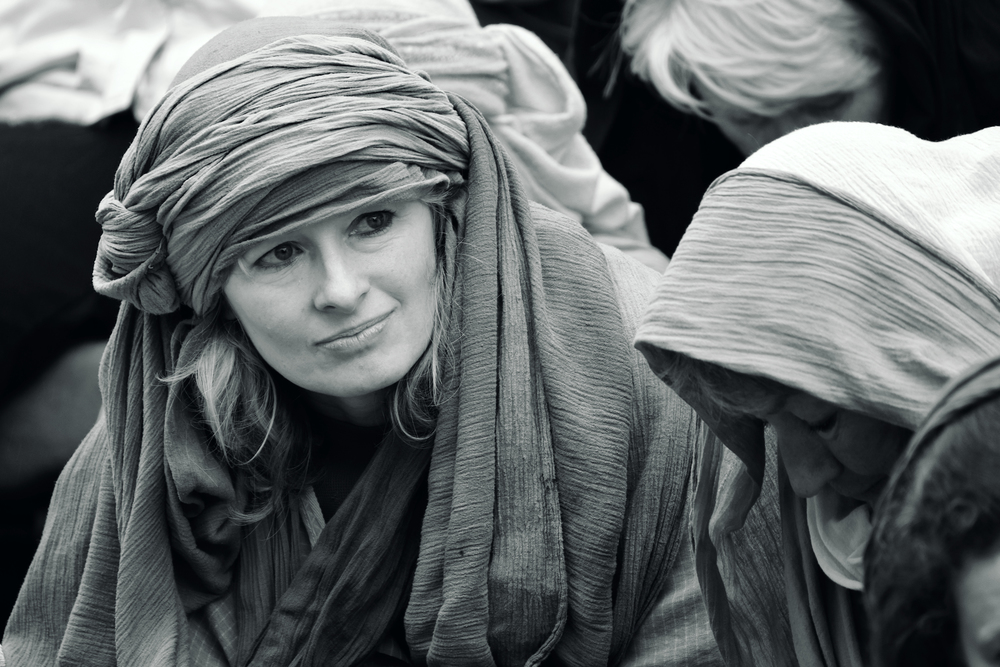

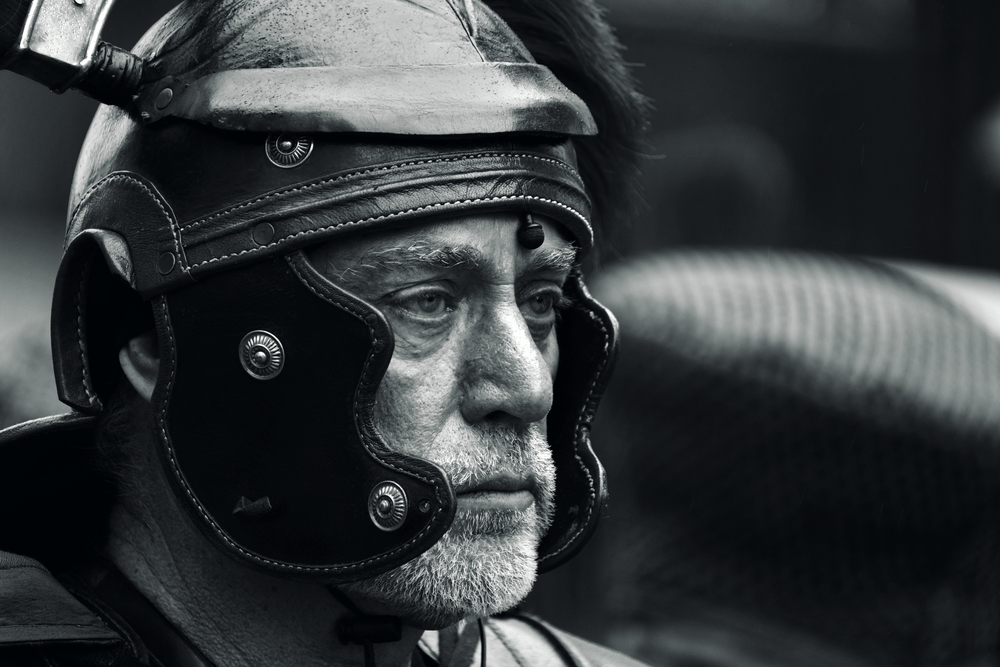
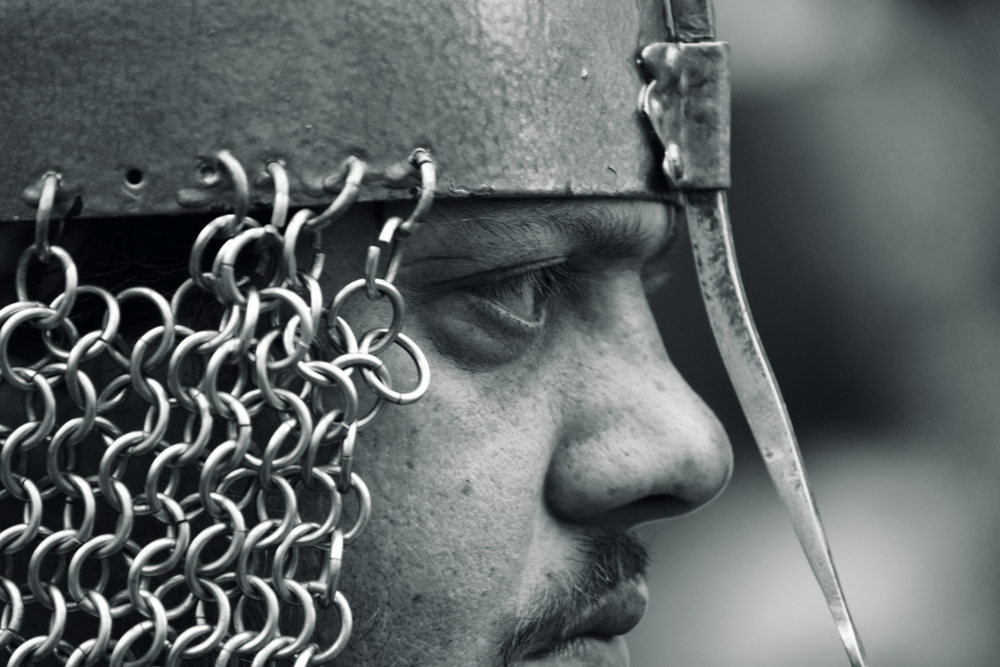
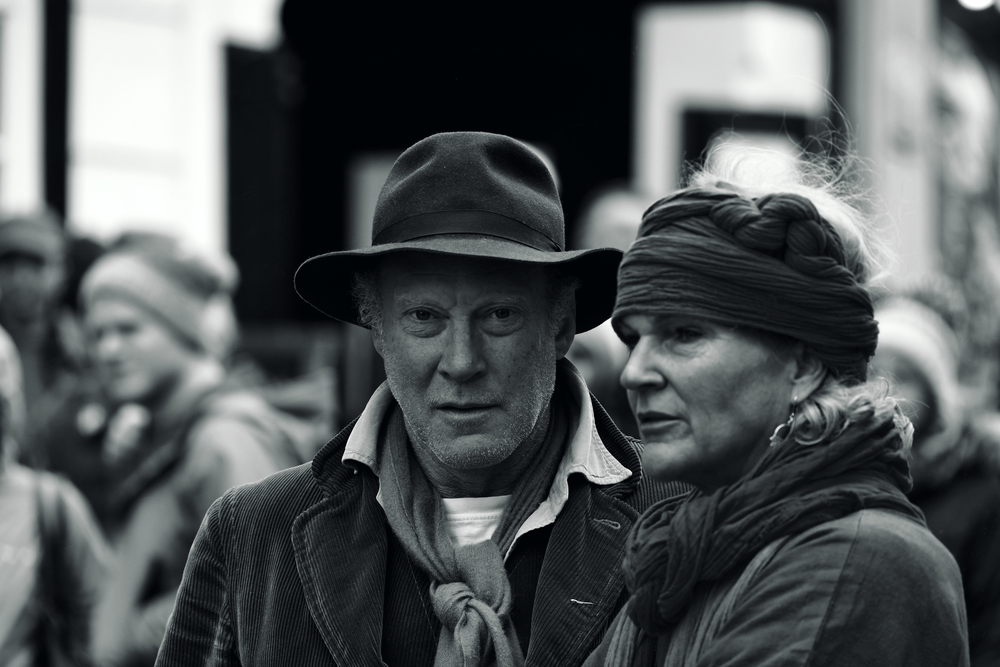
You wouldn’t think that the X-Pro2 would be a good match for this Fuji cannon, but it acquits itself well, particularly with the optional handgrip. EVF, of course. The larger sensor is a big asset for such a lens, and the detail in these images—SOOC jpgs unsharpened in post, with just tweaks to levels and contrast—speaks volumes. Look at the texture in the fabrics, and the hair and the detail captured in the faces. In handling terms if I were going to use this lens extensively I confess that I would be waiting impatiently for the XT-2 which will undoubtedly come with the same sensor but will offer more grippability (as well as additional battery power) but for my purposes the match with the X-Pro2 is more than good enough.
Confidence
Let’s be clear, this is another cracking lens from Fuji. It’s beautifully constructed, with a solid heft and feel that inspires confidence. I’ll happily use it as I intend for sports and airshows, but not for street or travel photography although I can see it being lugged into all sorts of interesting jungly places by intrepid wildlife shooters confident that it will enable them to deliver the goods.
Proofreading this piece I realise the number of times I have used the words “confident” or “confidence” in the past couple of paragraphs and how apt they are. Fuji have demonstrated their own confidence in their lensmaking abilities by releasing this lens. It won’t be for everyone, particularly given its price tag, but it will find a ready if not eager market for its reach, unique within the X-System. In use it inspires confidence in the photographer. It does what it does with quiet, almost Germanic efficiency. And, coming from an ex-Leica user as it does, there can surely be no higher accolade.
All photographs by Bill Palmer. Click on individual frames to enlarge
You can find more from Bill Palmer at Lightmancer
- Subscribe to Macfilos for free updates on articles as they are published. Read more here
- Want to make a comment on this article but having problems? Please read this


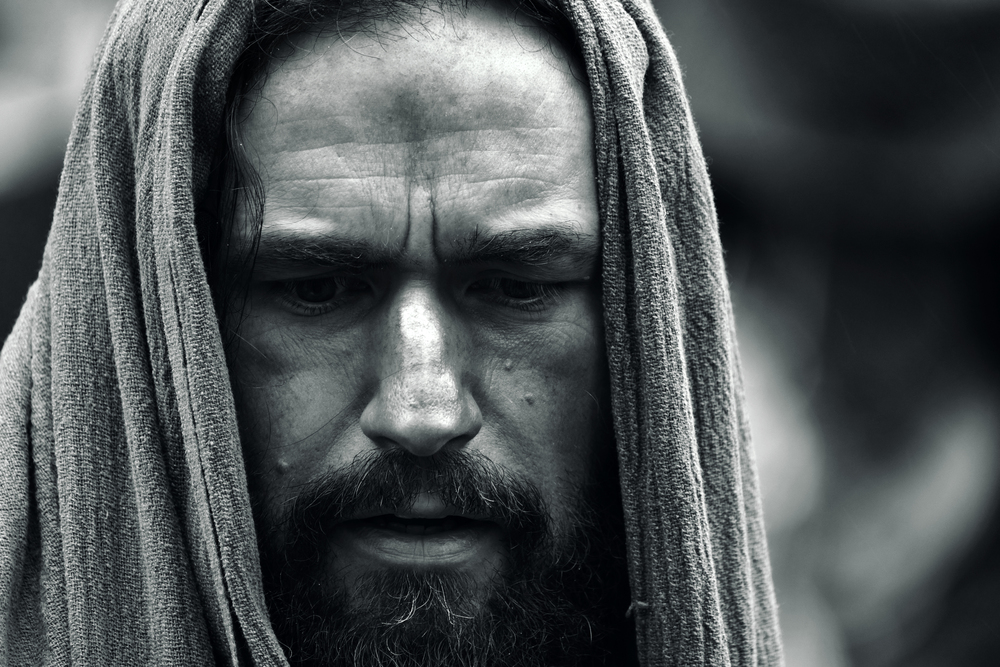


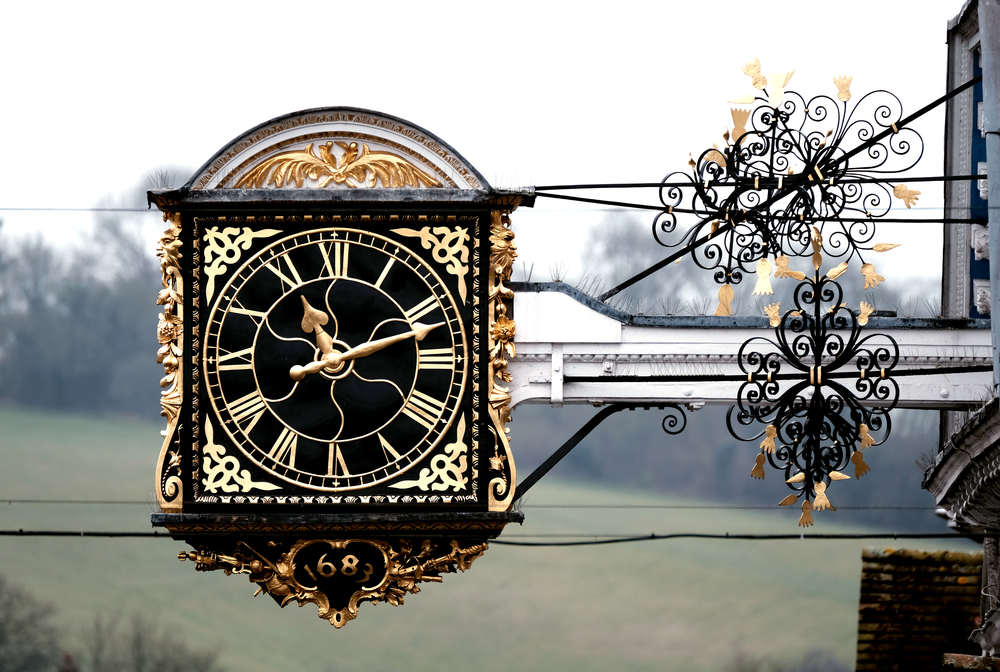
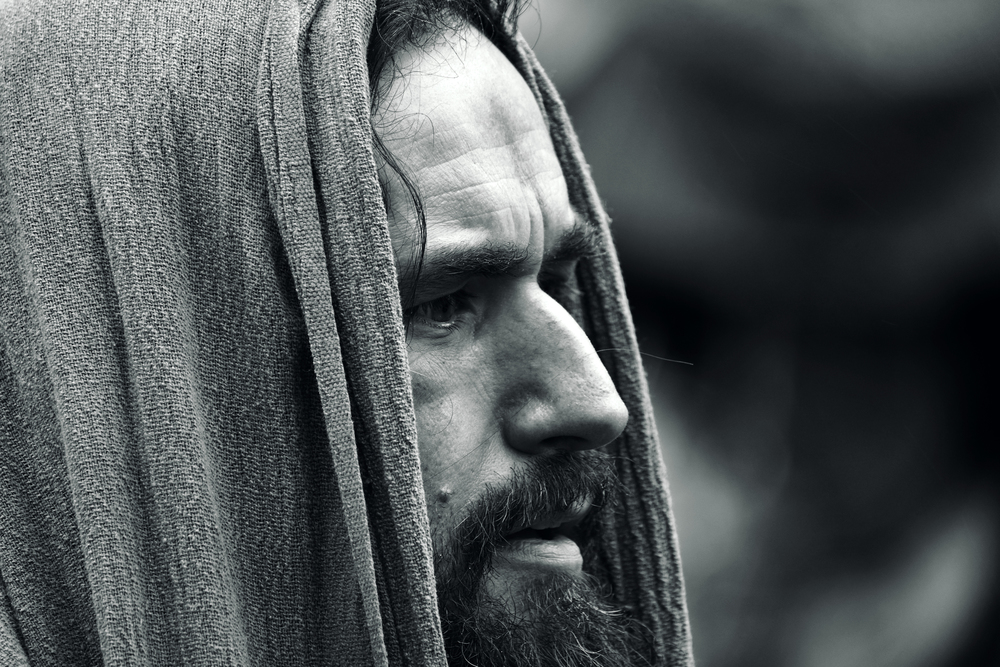
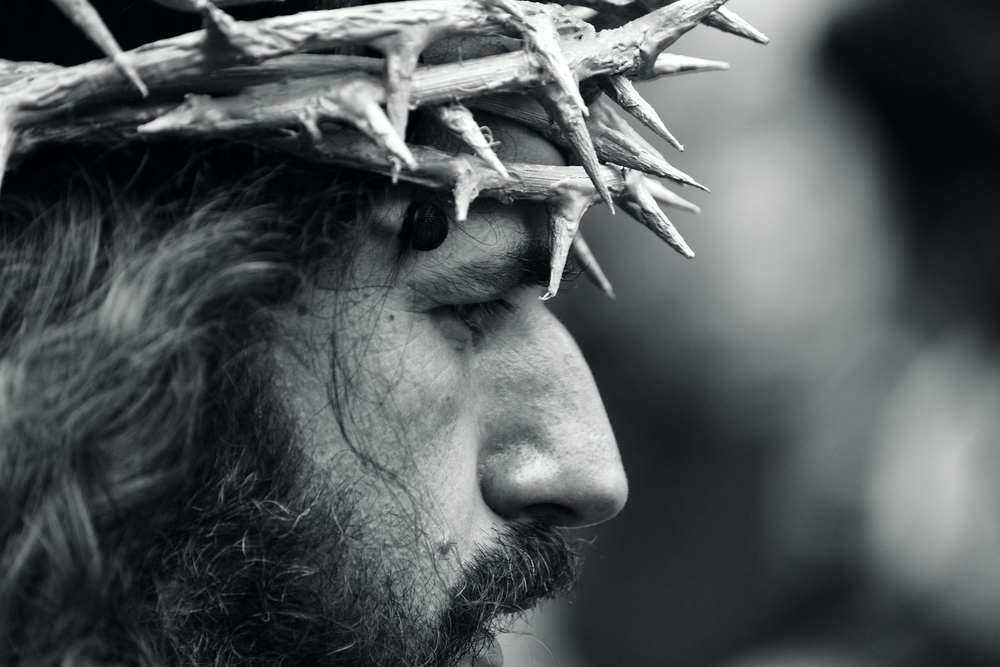
Your review is as beautiful as the lens. Thank you!
Excellent review! Thank you.